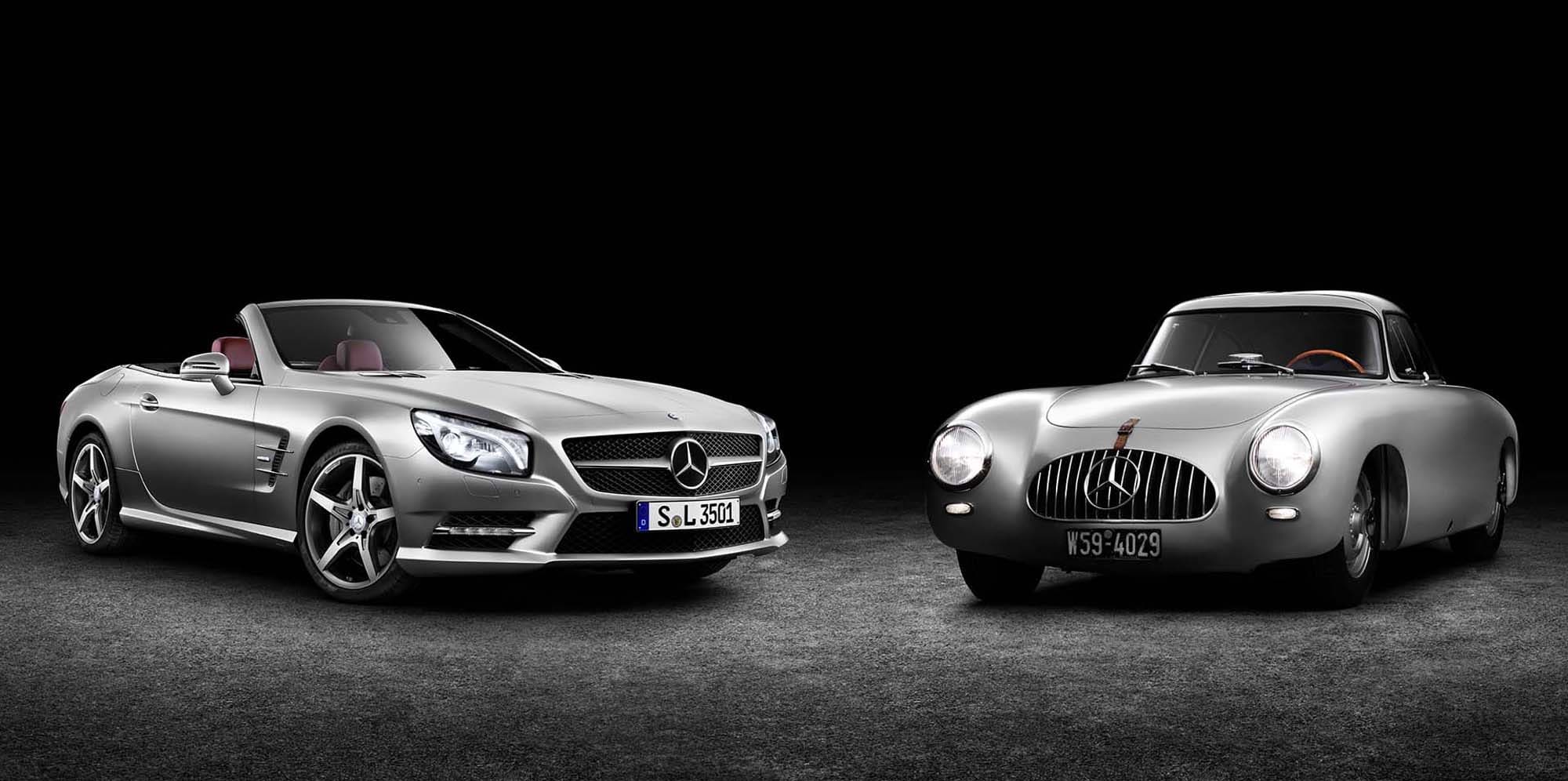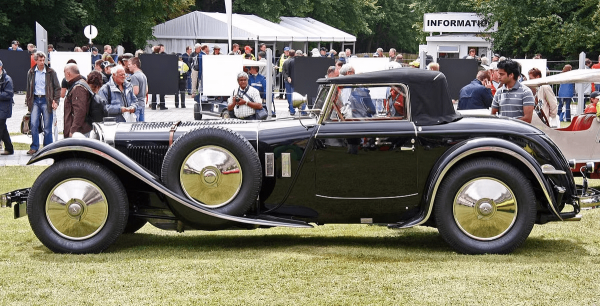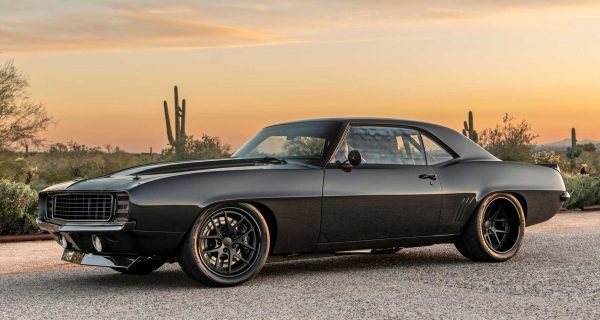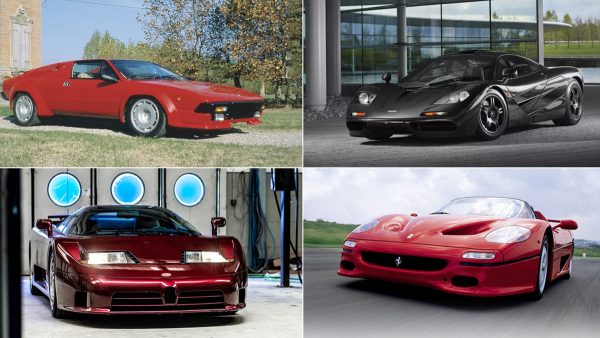The history of sports cars is a captivating saga, woven with the threads of technological advancement, aesthetic evolution, and an unquenchable thirst for speed. This narrative chronicles the journey from the nascent stages of automotive development to the present-day marvels, showcasing how each era brought its own innovations and iconic models that collectively shaped this exhilarating vehicle category.
The Dawn of the Sports Car
The genesis of sports cars dates back to the early 1900s, a period marked by pioneering spirits in the automotive world. These early enthusiasts endeavored to blend the practical aspects of everyday vehicles with the adrenaline rush of racing. This led to the creation of automobiles that weren’t just modes of transport but symbols of speed and excitement. A prime example from this era is the 1904 Mercedes-Simplex 28/32. It was a revelation, featuring a 5.9-liter four-cylinder engine that churned out 40 horsepower – a remarkable figure for the time. This machine wasn’t just about raw power; it represented a new philosophy in car design, prioritizing performance and thrill.
The 1920s: A Confluence of Elegance and Velocity
As the world moved into the 1920s, the sports car narrative took a glamorous turn. This era witnessed the amalgamation of luxurious elegance with raw, unbridled speed. Cars manufactured during this time were not just vehicles; they were masterpieces of engineering and design. The Bugatti Type 35 is a sterling example of this period. Designed by Ettore Bugatti, this automobile was a symphony of style and speed. Its 2.0-liter, 8-cylinder engine, coupled with its iconic blue hue, made it a dominant force on racetracks. In the same vein, the Alfa Romeo 6C captured the essence of Italian automotive passion. Its design was a work of art, and its 6-cylinder engine provided an exhilarating driving experience, blending aesthetics with performance in a way that was unheard of at the time.
The Evolutionary Road
Each subsequent decade brought its own advancements and iconic sports cars. The 1950s and 1960s saw the emergence of models that combined sleek designs with powerful engines, reflecting the technological leaps of the era. The 1970s and 1980s introduced more aerodynamic profiles and electronic innovations, while the 1990s and 2000s pushed the envelope with groundbreaking materials and computer-aided design. Today, the sports car is at the pinnacle of automotive technology, with advancements in electric powertrains and autonomous driving technologies opening new horizons.
This journey through the history of sports cars is not just about the cars themselves; it’s a reflection of human ingenuity and the relentless pursuit of perfection. From the roaring engines of the early 20th century to the sophisticated machines of today, sports cars have always been more than just vehicles. They are a testament to the endless possibilities of engineering, design, and the human spirit’s quest for excitement and excellence
Post-World War II: The Sports Car Boom
The post-World War II era marked a significant turning point in the automotive industry, particularly in the realm of sports cars. This period saw an explosion of innovation and design that reshaped the landscape of high-performance vehicles.
In the late 1940s, the Jaguar XK120 emerged as a beacon of automotive excellence. Launched in 1948, it was more than just a car; it was a work of art on wheels. With its sleek lines and powerful 3.4-liter inline-six engine, the XK120 was not just about aesthetics; it was one of the fastest production cars of its era, easily surpassing 120 mph. Its blend of beauty and performance set a new benchmark for sports cars.
The 1950s witnessed the birth of an American legend – the Chevrolet Corvette. Debuted in 1953, the Corvette was America’s spirited response to European sports car dominance. It combined a striking design with a robust V8 engine, quickly becoming an icon of American automotive prowess. Over the years, the Corvette has evolved, but its early models laid the groundwork for its lasting legacy.
The 1960s: Muscle Cars and Supercars
The 1960s was a decade of diversity and innovation in the sports car sector. This era saw the rise of two distinct yet equally thrilling categories: muscle cars and supercars. Muscle cars, characterized by their raw power and aggressive styling, became an integral part of American culture. Icons like the Ford Mustang, Chevrolet Camaro, and Dodge Charger dominated the roads and drag strips with their potent V8 engines
Supercars, on the other hand, were engineered for peak performance. The Lamborghini Miura, introduced in 1966, was a trailblazer in this field. As the first road-legal sports car with a mid-engine layout, it set a new standard for what a supercar could be. Its breathtaking design and powerful V12 engine made it a symbol of automotive excellence.
In 1969, the Datsun 240Z marked a pivotal moment in sports car history. It melded Japanese engineering reliability with exhilarating sports car performance, featuring a responsive six-cylinder engine and an approachable price point. This made high-performance driving accessible to a broader audience, expanding the sports car market.
The 1970s and 1980s: Oil Crisis and Evolution
The 1970s brought new challenges with the oil crisis, prompting a shift in sports car design towards greater fuel efficiency without compromising performance. The Porsche 911 Turbo, introduced in the mid-1970s, epitomized this balance. With its rear-engine layout, turbocharged performance, and distinctive design, it became a timeless icon, showcasing the adaptability of sports cars to changing times.
The 1980s ushered in an era of technological advancement and aerodynamic refinement. The Ferrari Testarossa, launched in 1984, became the poster child of this era. With its flat-12 engine, distinctive side strakes, and a top speed exceeding 180 mph, it captured the imagination of car enthusiasts worldwide, symbolizing the ultimate union of power, style, and innovation.
This journey through the decades highlights the dynamic evolution of sports cars, reflecting the technological advancements, cultural shifts, and consumer preferences that have shaped their development. From the elegant lines of the Jaguar XK120 to the technological marvel of the Ferrari Testarossa, each era brought its unique contributions, cementing the sports car’s place in automotive history as a symbol of speed, style, and innovation.
The 1990s: A Resurgent Era in Supercar Mastery
This transformative decade in automotive history marked a renaissance in the world of supercars. It was during these years that the McLaren F1 emerged in 1992, not merely as a car but as a symbol of superlative performance. This marvel, with its advanced BMW-engineered V12 powerplant, introduced the world to the unique concept of a central driving position, setting a new paradigm in high-performance vehicles. Holding the coveted title of the fastest production car globally for a prolonged period, the McLaren F1 became a legend in its own right.
In the same era, other automotive luminaries like Ferrari and Porsche weren’t far behind. Ferrari’s F40 and Porsche’s 959 became the epitomes of excellence, straddling the fine line between track-focused dynamism and everyday road usability. These machines weren’t just about speed; they were about redefining the very essence of a supercar, blending agility, power, and versatility in unprecedented ways.
The 21st Century: A Fusion of Eco-Conscious Power and Breakthrough Technology
As the new millennium unfolded, so did a new chapter in the supercar narrative, marked by a harmonious fusion of powerhouse performance and environmental consciousness. The advent of hybrid technology revolutionized the industry, as seen in the Porsche 918 Spyder, introduced in 2013. This vehicle wasn’t just a car; it was a statement – combining a muscular V8 engine with electric motors to produce an awe-inspiring 880 horsepower.
This era also witnessed the rise of other hybrid marvels like the McLaren P1 and LaFerrari, each setting new standards in hybrid supercar performance. These vehicles were more than just fast cars; they were testaments to the possibility of marrying environmental responsibility with jaw-dropping speed and exhilarating power.
But the advancements didn’t stop with hybridization. The industry saw significant leaps in the use of lightweight materials, state-of-the-art aerodynamics, and innovative engineering approaches, continually pushing the boundaries of what was thought possible in automotive performance.
Present-Day Panorama: A Diverse and Innovative Landscape
Today, the sports car scene is a vibrant tapestry of diversity and innovation. Every enthusiast can find a match, from the time-honored rear-engine, rear-wheel-drive beauties like the Porsche 911 to the bold, mid-engine exotics like the Lamborghini Huracán. These cars offer an unparalleled mix of design, performance, and technological sophistication.
Electric sports cars are carving out their niche, too, with models like Tesla’s Model S demonstrating that electric powertrains can deliver not just environmentally friendly options but also remarkable acceleration and handling prowess. As electric technology evolves, it promises to bring forth a new era of high-performance, eco-friendly sports cars.
Additionally, the incorporation of autonomous driving technology into sports cars is a fascinating development. These modern marvels come equipped with cutting-edge driver-assist systems that enhance safety and convenience, all while maintaining the essence of the driving experience.
Conclusion: The Timeless Journey and Future Prospects of Sports Cars
The story of sports cars is a captivating tale of continuous innovation, performance enhancement, and stylistic evolution. From their early days as niche high-performance vehicles to today’s sophisticated, multi-faceted machines, sports cars have constantly been at the forefront of automotive advancements. Their lasting allure lies in their unique ability to provide an unmatched driving experience – be it the sheer might of a muscle car, the refined agility of a supercar, or the innovative sustainability of an electric vehicle. As we look ahead, sports cars continue to symbolize the spirit of discovery, performance, and elegance, ensuring their legacy in the ever-evolving narrative of automotive history.





